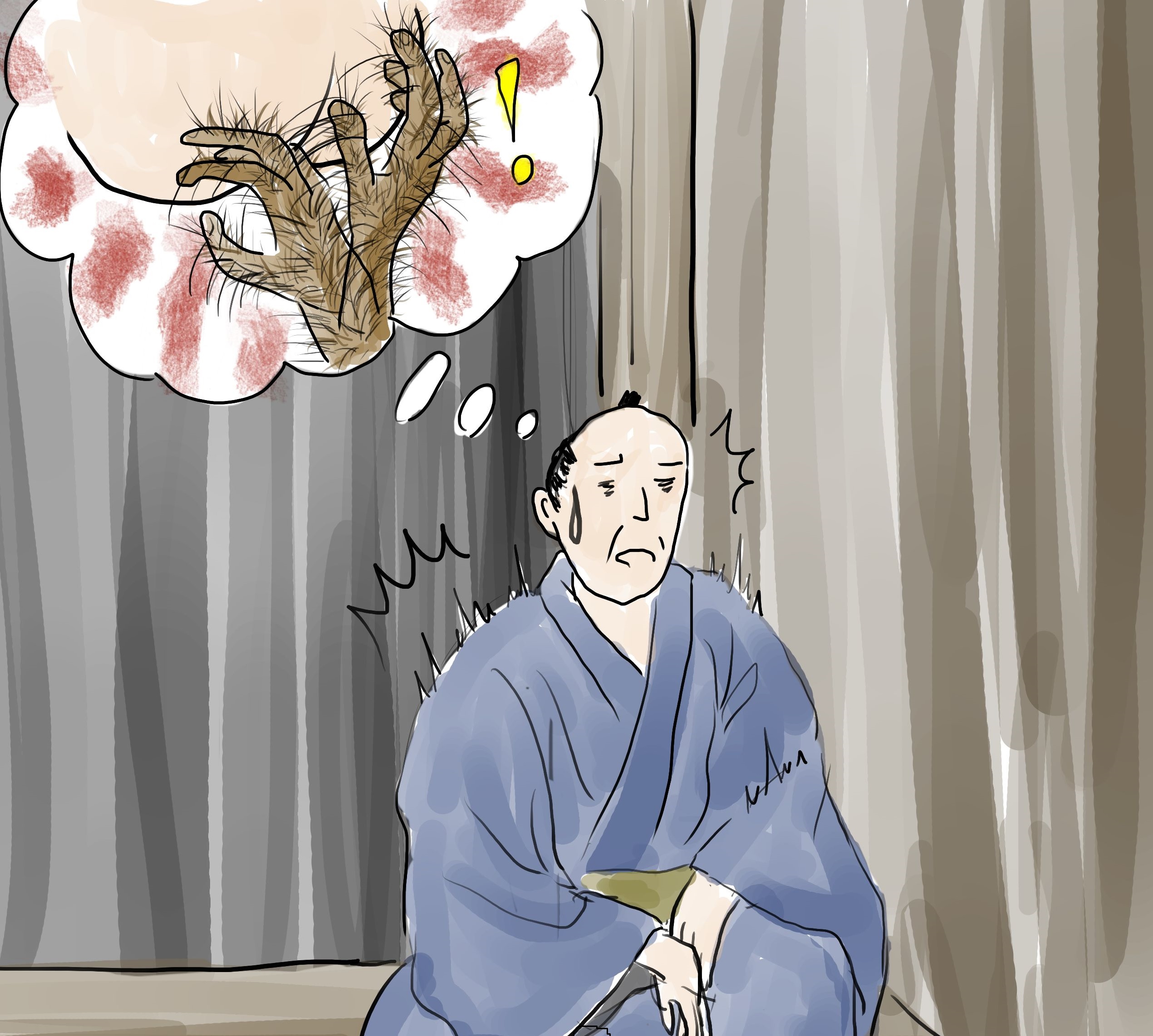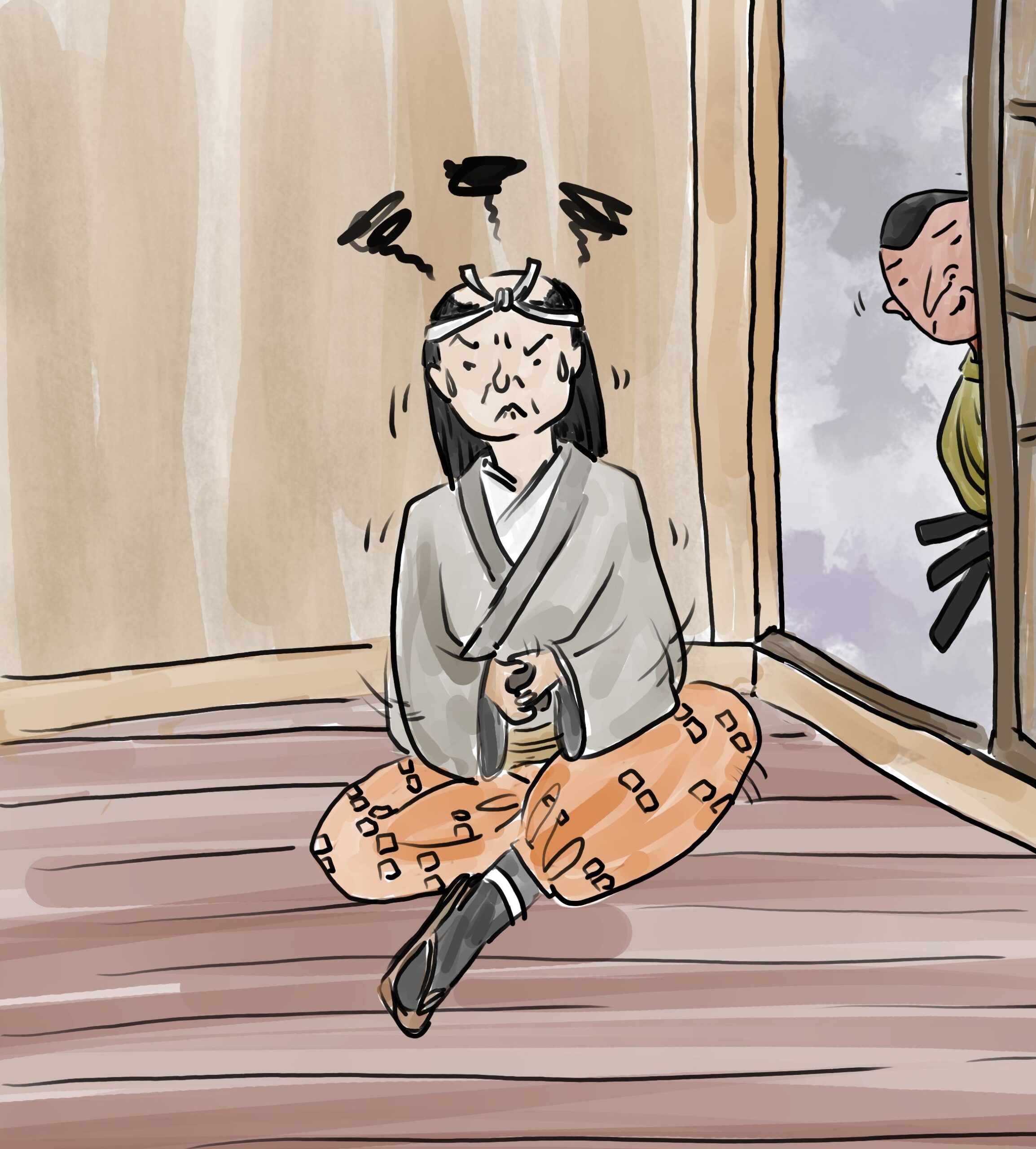Tonight’s story features an onryō, the most terrifying of all Japanese monsters. (Yes, even more terrifying than the toilet stroker!) The fear of ghosts that come back from the grave to enact supernatural revenge on the living has been a deep part of folklore since ancient times, and as such onryō stories make up a large portion of the kaidan stories from the Heian through Edo periods, and even to today with modern horror movie ghosts modeled after these centuries-old patterns.
These stories are deliciously violent and cruel, and they really make me feel like Halloween is just around the corner. The descriptive imagery that comes forth even in these very short stories is chilling, from the description of the ghost herself, to specifically what she does. And it somehow is even more so when the ghost’s victim seems to deserve their punishment, like in tonight’s story!
I will be taking a painting break tomorrow to rest my arm, so my wife will once again pick up the slack for tomorrow’s story!
The Onryō of Abe Sōbei’s Wife
In Hayami, Buzen Province there was a man called Abe Sōbei. He was always cruel towards his wife, and would not allow her to eat. He wife was so frustrated by this that she fell ill, but her husband would not give her medicine, and she grew even worse. She died in the spring of her nineteenth year.
In the final moments of her life, she turned to Sōbei and expressed the malice she had built over so many years. “I will never forget what you have done, no matter how many lives I live. You will soon understand,” she said, and then died.
Sōhei discarded his wife’s corpse in the mountains and did not hold a funeral. At midnight on the seventh day from her death, his wife came to his bedchambers. From the waist down she was stained with blood, her long hair loose and disheveled, her face a sickly pale green, teeth blackened, eyes glaring wide like bells, and her mouth split open like a shark’s.
She stroked Sōbei’s sleeping face with her icy hands, and as Sōbei shrunk back, his wife cackled. Then she tore the body of the woman sleeping next to him into seven or eight pieces, pulled out her tongue and tucked it into her bosom and said, “I’m leaving now. I’ll come back tomorrow night, and I’ll show you my years-long grudge.” Then she disappeared.
Sōbei was so startled that he asked a high priest to recite the Great Perfection of Wisdom Sutra and perform an exorcism. The following night he set up bows and guns at all of the house’s entrances and exits, fortified his position, and waited. At midnight, Sōbei’s wife came up behind him out of nowhere and watched him intently. Sōbei thought he felt a chill at his back, and when he turned around, she glared at him.
“Well, well, aren’t you very cautious,” she said, and she moved to stroke his face, but then suddenly turned into a terrifying figure, tore Sōbei in two, kicked all of the maidservants around her to death, kicked through the ceiling, and rose up into the empty sky.






